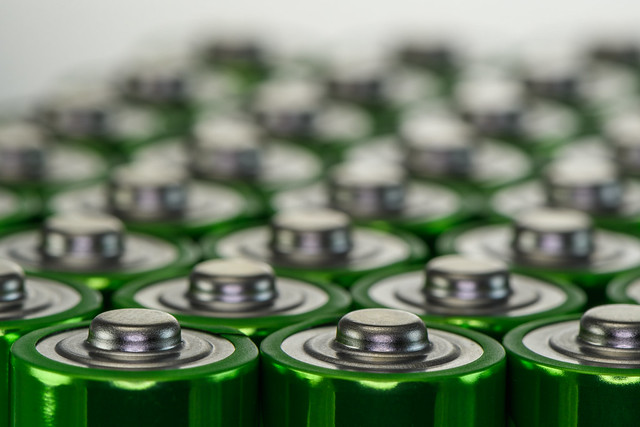Recharge Dead Lithium-ion Battery – Reviving and Charging Methods
Mar 31, 2020 Pageview:6818
Lithium-ion batteries are the cells of the future, powering enormous inventions and machines around the world. However, the good thing about these cells is that they have an exceptionally long lifespan. This allows the cells to be rejuvenated whenever they may seem dead.
Can you revive a dead lithium-ion battery?
Yes, it is possible to resurrect a dead lithium-ion battery using a few simple and convenient tools. However, these batteries can be very unstable especially when they are handled inappropriately. Therefore, when you’re trying to revive a dead lithium-ion battery, ensure that it isn’t damaged in the first place and that you know what you’re doing.
How do you charge a dead lithium-ion battery?
Sometimes, when you store a discharged lithium-ion battery for extended periods, it may fall into a sleep mode. All batteries tend to self-discharge, even in lithium-ion batteries, although at a very slow rate, the remaining charge in the cells would be depleted. You should get a battery charger that has a special feature known as “boost” to charge the battery that seems to be dead. Normally, every modern lithium-ion battery is fitted with a protection circuit and when the battery is in a discharged state below normal, this circuit shuts down.
The boost function in some analyzers or lithium-ion battery chargers applies a small amount of current that would jumpstart the protection circuit. When the right cell voltage is reached, the battery will be capable of taking in charge normally. However, experts warn against boosting lithium-ion batteries that have been discharged below voltage point for a very long period. This is because such a cell may become unstable during the process and this can lead to the battery overheating. In the end, th battery might even catch flames and explode thus, causing lots of damage.
How do you revive a dead lithium-ion battery?
When reviving lithium-ion batteries, you need to take extra care because these cells hold in a lot of energy. The electrolyte used in these cells is extremely flammable and therefore, any wrong move can cause serious damage to you and the battery as well. As such, it is always recommended that you take heed of the safety precautions when handling these cells, such as wearing safety gloves and goggles when working with lithium-ion batteries. The following are the steps taken to resurrect a dead lithium-ion battery:
Step 1: Tools
There are a few tools required to revive a dead lithium-ion battery and they include:
Safety goggles
Lithium-ion battery charger
Multimeter
USB cable
Crocodile clips
Power source/ alternate lithium-ion battery with similar properties
Paperclips
Step 2: Juicing your battery
First things first, you should put on your safety goggles and even gloves if you happen to have a pair. Safety is the most significant consideration for any experiment because once it’s compromised, serious damages or injuries might occur.
Next off, take the voltage reading of the dead lithium-ion battery using the multimeter. You should be aware that these lithium-ion cells can fall into a condition known as sleep mode. This occurs when the battery is drained too much and can be confused with death of the cells. Usually, when you leave your already discharged battery in its designated load and it is further discharged, it goes into sleep mode and this prevents it from accepting any charge.
Using the healthy battery, one that has the same voltage as the dead cell, place the two in a parallel circuit formation. Using the crocodile clips, connect the two batteries together in the terminals. Both negative terminals should be connected together and the positive ones as well. Be sure to prevent the wires from crossing each other as this can cause a short.
Leave the batteries in that state for about 15 minutes as you monitor the progress, looking out for any signs of possible hazards like overheating. Once the period has expired, take the voltage reading. You are expected to note a rise in the voltage of the dead lithium-ion battery indicating that it is ready to accept charge.
Step 3: Alternative (USB cable)
Another alternative method includes using a USB cable. Take an old USB cable that isn’t being used and also, one that is not damaged and cut the smaller end off. Expose the wires from the cut end and separate them. Afterwards, connect the red wire to the positive terminal and the black one to the negative terminal and tape them in place. Plug in the larger end of the USB cable into a power source like a computer or power bank. Leave the set-up for a few minutes while you monitor it, looking out for any hazardous signs.
Step 4: Charge and discharge the battery
Plug in the battery into a lithium-ion battery charger and charge it to maximum capacity. A normal lithium-ion battery would take about 3 hours to get t 100% but this varies depending on the size of the cells. Once the battery is fully charged, you will need to discharge it. This can be done by inserting the battery back into its load and giving it and draining it entirely but not below voltage point.
Step 5: Freeze the battery
Once the lithium-ion battery is fully discharged you will have to place it in an airtight plastic bag and seal it. Ensure that there is no moisture in the bag before putting in the battery and you can wipe it dry if you suspect something. Place the bag into the freezer and let it settle for around 24 hours. When this time frame expires, take the battery out of the freezer and leave it to defrost for about 8 hours until it gets back to room temperature.
Step 6: Charge your battery
Once the battery is back to room temperature, you can then plug it into your lithium-ion battery charger and take it back to 100% once more. You would notice that the battery’s performance has significantly improved and that it would even last longer in between charge cycles.
Conclusion
If you have no idea of what you’re doing, be sure to call in some help from people who are equipped with the skills and experience in such projects. There’s no need to throw away a perfectly good lithium-ion battery in the name of it being dead because it might actually be asleep. After all, this battery technology is expensive to acquire in the first place.
Leave Message
Hottest Categories
-
Hottest Industry News
-
Latest Industry News












